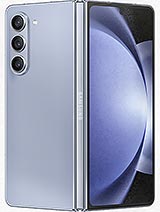Lava Blaze Duo alternatives
Tap above to see alternatives.
Motorola Razr 60 alternatives
Tap above to see alternatives.
Motorola Razr 60

Motorola Razr 60
-
Dimensity 7400
4 nm
-
4500 mAh
30W
-
6.9"
1080 x 2640 pixels
-
50 MP
4K@30fps
- Specs
2x2.5 GHz Cortex-A78
6x2.0 GHz Cortex-A55
2.6 GHz, Quad core, Cortex A78
2 GHz, Quad core, Cortex A55
8GB 128GB (UFS 3.1)
(wide), PDAF
2MP
f/1.7, 25mm (wide), 1/1.95", 0.8µm, dual pixel PDAF, OIS
13 MP
f/2.2, 120˚ (ultrawide), 1/3.0", 1.12µm, AF
1080p@30/60fps
f/2.0, (wide), 1.0µm
f/2.4, 25mm (wide), 1/3.14", 0.7µm
1080p@30/60fps
SIM1: Nano, SIM2: Nano
SIM1: Nano, SIM2: eSIM
13 5G bands
n1, n3, n5, n7, n8, n20, n28, n38, n40, n41, n66, n77, n78
16 5G bands
n1, n2, n3, n5, n7, n8, n20, n26, n28, n38, n40, n41, n66, n75, n77, n78
In this performance comparison, the Motorola Razr 60 with its MediaTek Dimensity 7400 (4nm) performs better than the Lava Blaze Duo with the Mediatek Dimensity 7025 (6nm), thanks to superior chipset efficiency.
Motorola Razr 60 offers 3 years of OS updates, whereas Lava Blaze Duo provides 1 years. For security updates, Motorola Razr 60 offers 4 years of support compared to Lava Blaze Duo's 2 years.
Both Lava Blaze Duo and Motorola Razr 60 feature AMOLED displays, offering vibrant colors and deeper blacks. Both smartphones offer the same 120 Hz refresh rate. Both devices deliver the same brightness level at nits. Both phones have the same screen resolution.
Lava Blaze Duo comes with a larger 5000 mAh battery, which may offer longer usage on a single charge. Lava Blaze Duo also supports faster wired charging at 33W, compared to 30W on Motorola Razr 60. Motorola Razr 60 supports wireless charging at 15W, while Lava Blaze Duo lacks this feature.
Lava Blaze Duo offers better protection against water and dust with an IP64 rating.
- Lava Blaze Duo – Check price here
¹ Scores can vary even with the same chipset due to RAM, thermals, and software optimization.











